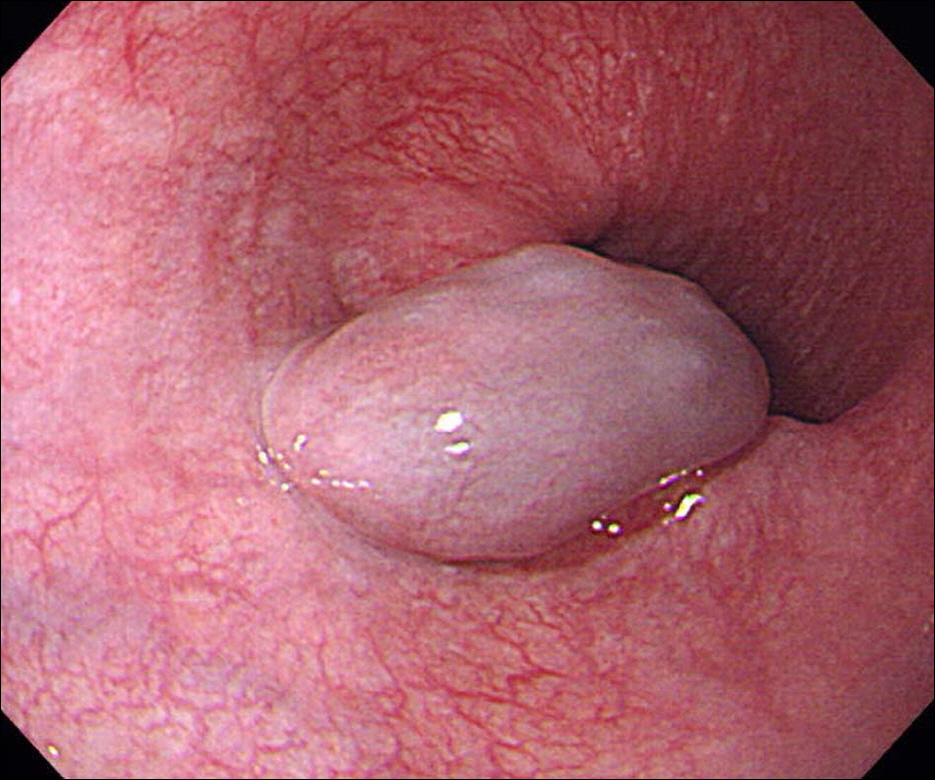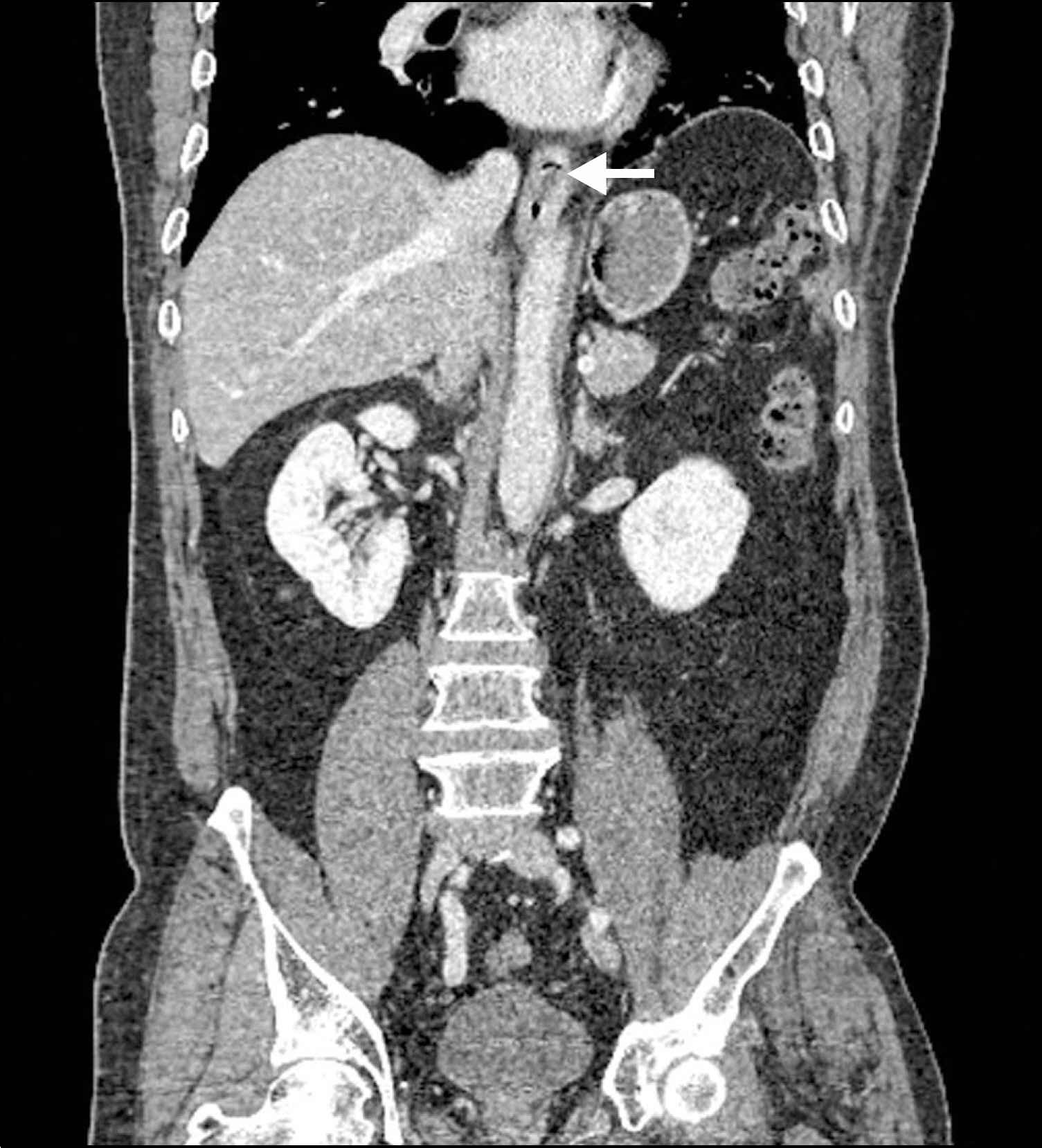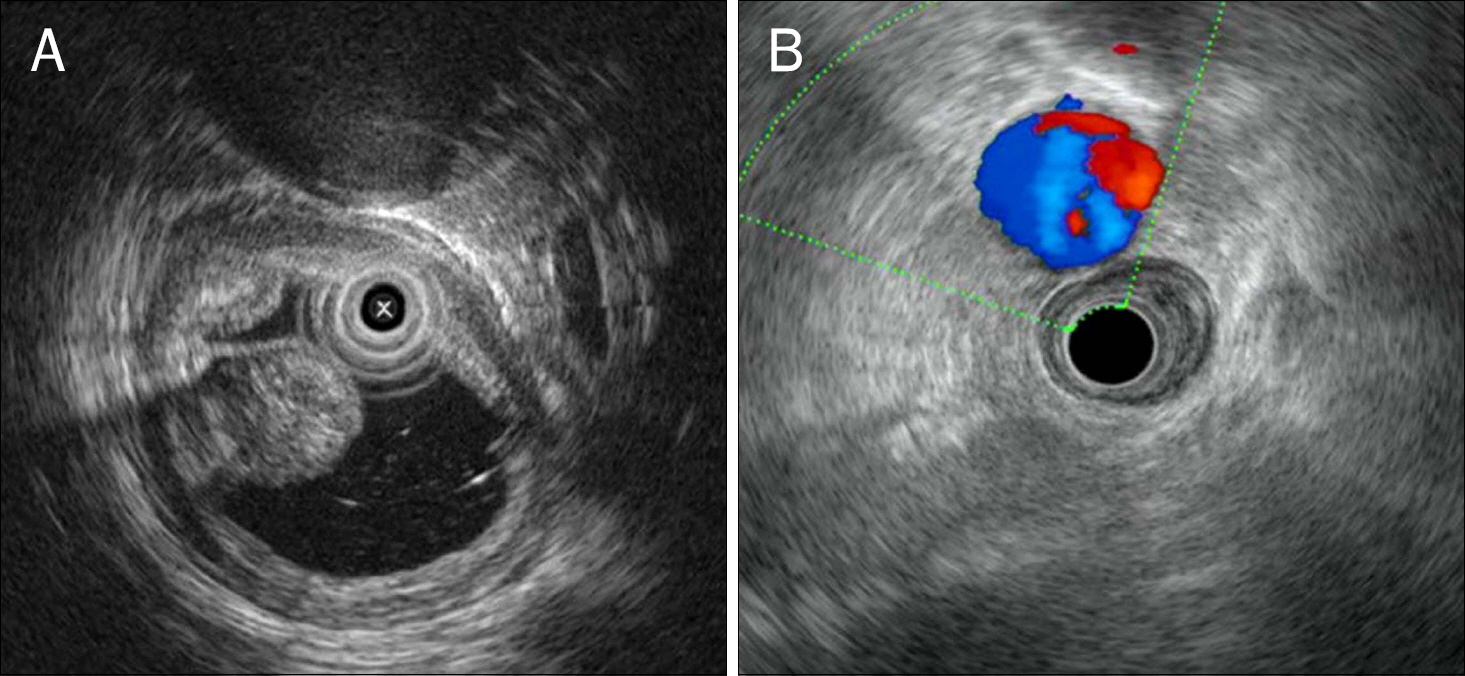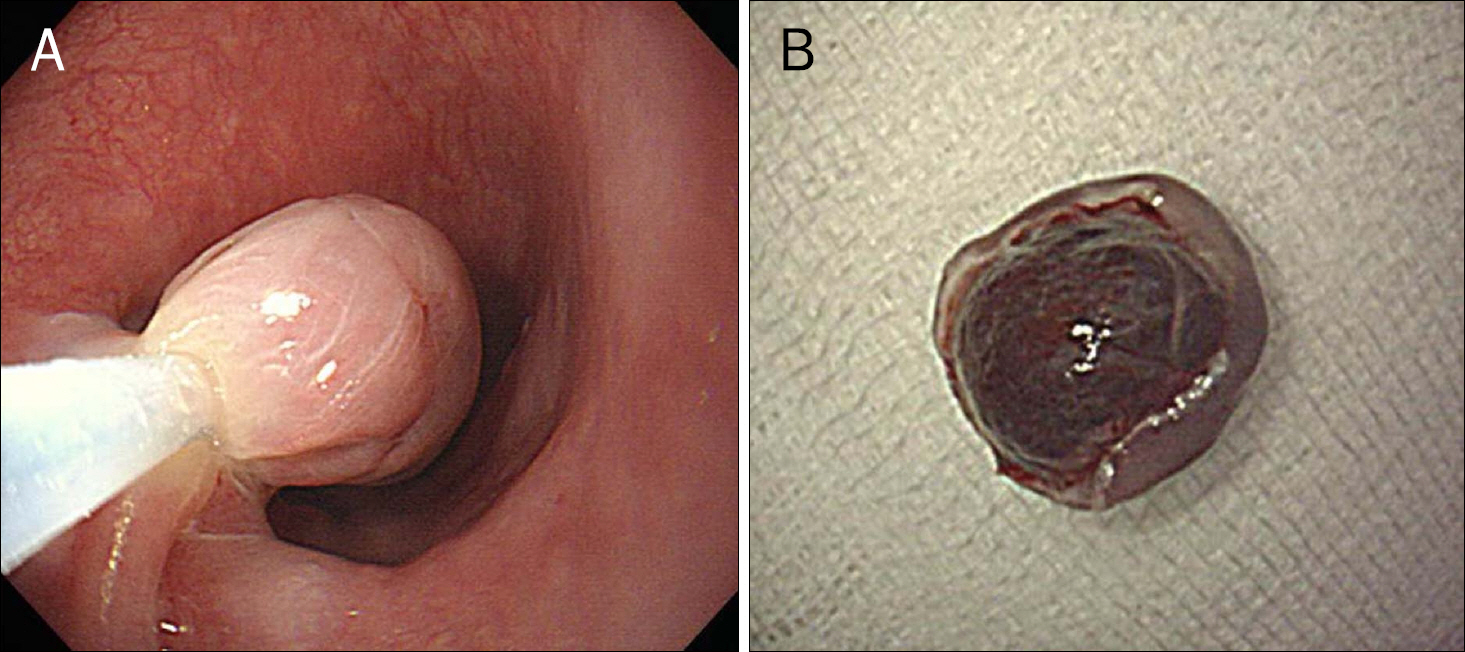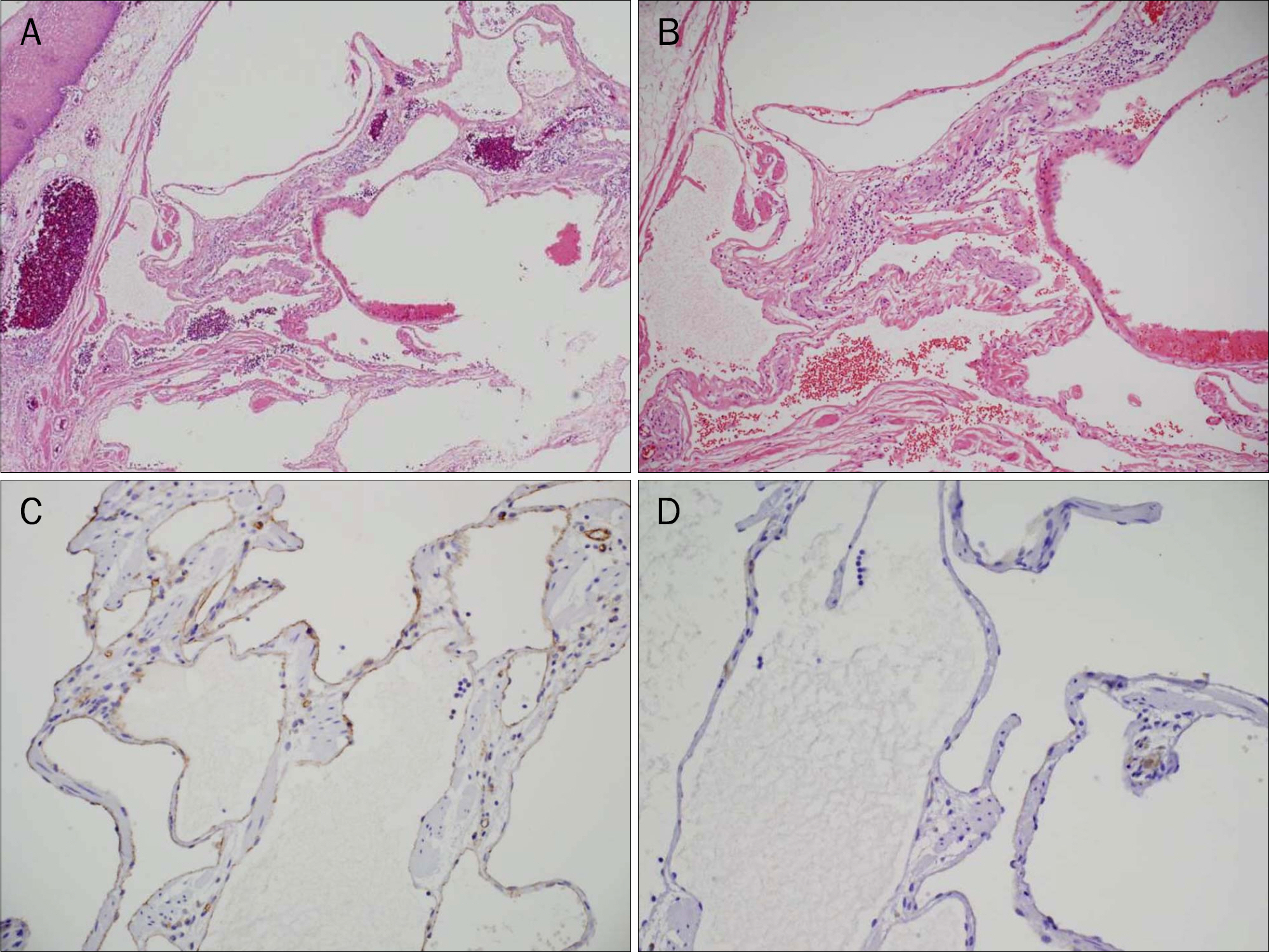Korean J Gastroenterol.
2015 Nov;66(5):277-281. 10.4166/kjg.2015.66.5.277.
Esophageal Hemangioma Treated by Endoscopic Mucosal Resection: A Case Report and Review of the Literature
- Affiliations
-
- 1Division of Gastroenterology, Department of Internal Medicine, Korea University College of Medicine, Seoul, Korea. sungwoojung@korea.ac.kr
- KMID: 2373357
- DOI: http://doi.org/10.4166/kjg.2015.66.5.277
Abstract
- Hemangioma of the esophagus is a rare form of benign esophageal tumor. It usually presents as a single lesion located in the lower third of the esophagus and is mostly asymptomatic. However, it may occasionally cause hematemesis and/or obstruction. Surgical resection is the conventional treatment modality for managing esophageal hemangioma, but less invasive approaches such as endoscopic therapy are recently becoming more widely employed. Herein, we report a case of a 54-year-old man who presented with an esophageal hemangioma that was successfully treated by endoscopic mucosal resection without any complications.
Keyword
MeSH Terms
Figure
Reference
-
References
1. Choong CK, Meyers BF. Benign esophageal tumors: introduction, incidence, classification, and clinical features. Semin Thorac Cardiovasc Surg. 2003; 15:3–8.
Article2. Rice TW. Benign esophageal tumors: esophagoscopy and endoscopic esophageal ultrasound. Semin Thorac Cardiovasc Surg. 2003; 15:20–26.
Article3. Sogabe M, Taniki T, Fukui Y, et al. A patient with esophageal hemangioma treated by endoscopic mucosal resection: a case report and review of the literature. J Med Invest. 2006; 53:177–182.
Article4. Park SW, Moon JS, Lee SR, et al. A case of esophageal hemangioma treated by endoscopic mucosal resection. Korean J Gastrointest Endosc. 2010; 40:244–248.5. Gentry RW, Dockerty MB, Glagett OT. Vascular malformations and vascular tumors of the gastrointestinal tract. Surg Gynecol Obstet. 1949; 88:281–323.6. Plachta A. Benign tumors of the esophagus. Review of literature and report of 99 cases. Am J Gastroenterol. 1962; 38:639–652.7. Shigemitsu K, Naomoto Y, Yamatsuji T, et al. Esophageal hemangioma successfully treated by fulguration using potassium titanyl phosphate/yttrium aluminum garnet (KTP/YAG) laser: a case report. Dis Esophagus. 2000; 13:161–164.
Article8. Rajoriya N, D'costa H, Gupta P, Ellis AJ. An unusual cause of dyspepsia: oesophageal cavernous haemangioma. QJM. 2010; 103:791–793.
Article9. Hanel K, Talley NA, Hunt DR. Hemangioma of the esophagus: an unusual cause of upper gastrointestinal bleeding. Dig Dis Sci. 1981; 26:257–263.
Article10. Tsai SJ, Lin CC, Chang CW, et al. Benign esophageal lesions: endoscopic and pathologic features. World J Gastroenterol. 2015; 21:1091–1098.
Article11. Araki K, Ohno S, Egashira A, et al. Esophageal hemangioma: a case report and review of the literature. Hepatogastroenterology. 1999; 46:3148–3154.12. Ghiatas AA, Chopra S, Escobar B, Esola CC, Chintapalli K, Dodd GD 3rd. Esophageal hemangioma. Eur Radiol. 1997; 7:1062–1063.
Article13. Lee HJ, Kim YT, Sung SW, Kim JH. A case of long segment my-omectomy for the treatment of esophageal hemangioma. Korean J Thorac Cardiovasc Surg. 2003; 36:206–210.14. Raza W, Nasir H, Ilahi F, Zafar Z. Esophageal haemangioma: a case report and review of literature. J Pak Med Assoc. 2010; 60:310–311.15. Aoki T, Okagawa K, Uemura Y, et al. Successful treatment of an esophageal hemangioma by endoscopic injection sclerotherapy: report of a case. Surg Today. 1997; 27:450–452.
Article16. Shin S, Choi YS, Shim YM, Kim HK, Kim K, Kim J. Enucleation of esophageal submucosal tumors: a single institution's experience. Ann Thorac Surg. 2014; 97:454–459.
Article
- Full Text Links
- Actions
-
Cited
- CITED
-
- Close
- Share
- Similar articles
-
- A Case of Esophageal Hemangioma Treated by Endoscopic Mucosal Resection
- Successful Endoscopic Mucosal Resection of a Low Esophageal Carcinoid Tumor
- A Case of Early Esophageal Cancer Treated by Endoscopic Mucosal Resection Using a EEMR Tube
- A Case of High Grade Dysplasia Arising from Barrett's Esophagus Treated with Endoscopic Mucosal Resection
- A Case of Long Segment Myomectomy for the Treatment of Esophageal Hemangioma

